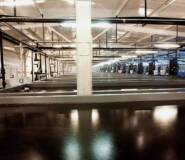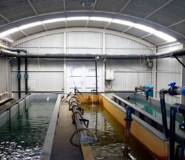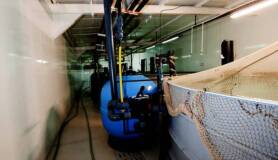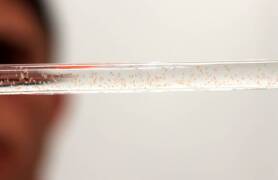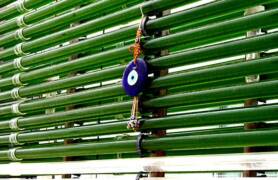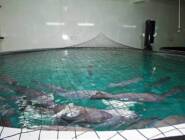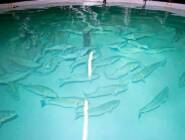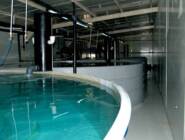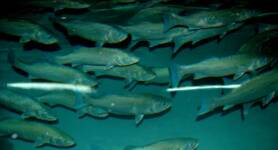HATCHERY
Closed-Cycle System
In the closed-cycle system 3% of the 4,000 m3 of water is changed each hour. This is possible thanks to the use of drum filters, protein skimmers, disinfection with ozone and ultraviolet light, and biological filters, which clean the water before it is recycled. The 3% of new water that enters the system is to compensate for the loss of water through evaporation or from the drum filter. The fish reared in this system are also primed for being introduced into the sea. When the fish are put into the sea cages, they are exposed to pathogens that are naturally present in the water. In the hatchery the water is subject to disinfection that reduces the level of these pathogens so that they cannot harm the fish, yet they do trigger the animals’ immune systems, so that when put into the sea the fish can cope with the pathogens they are exposed to without falling ill.
Live Feed Cultivation
From the larval stage, we meet the animal nutritional needs of the fish with zooplanktons as in their natural environment, with our production of Rotifer and the Artemia system and the plant-based nutrition need with our algae production.
In our closed-cycle alg cultivation unit which is the largest in Europe, we enrich rotifers with different algal cultures that are the main sources of omega-3 (EPA-DHA) and omega-6 fatty acids. By using at least 4 different algal cultures in this nutritional stage we ensure that nutrients pass into organisms in high amounts.
With this live feed cultivation unit we manage to produce the feed from the lowest stage of the food chain and get high quality results for our fish.
Broodstock
Quality starts with the fingerlings and high quality fingerlings take time to produce, up to a decade, because the broodstock has to be selected, further generations to be produced. We are selecting our broodstock from the best of our fish. That brings us many advantages. For instance a 1 kg seabass normally reaches that size in 4 years, though we have reduced that period to 3 years, while a 2 kg fish takes 5 years with our selected broodstock.
We always continue our R&D studies to get better results on fertility of our broodstock for better and stronger generations.

